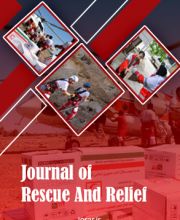The Effectiveness of Psychological Interventions in the Well-Being of Adolescents Surviving Natural Disasters in East Azerbaijan Province(مقاله پژوهشی وزارت بهداشت)
INTRODUCTION: Given that Iran is among the top five earthquake-prone countries in the world and no region of the country is safe from unforeseen crises, raising awareness regarding the victims' mental health issues is one of the top priorities limiting the extent of problems and subsequent consequences. The present study aimed to investigate the effectiveness of psychological interventions in the well-being of adolescents surviving natural disasters as opposed to regular individuals. METHODS: The study population in the present cross-sectional comparative study consists of high school students (13–18 years old) from the earthquake-stricken village of Sarand in East Azerbaijan Province, and normal students from Zarnaq in the same province. They were assessed through the total population sampling method. The data collection tool utilized was a questionnaire (Ryff) to assess anxiety and depression. Data is analyzed and screened by measures of central tendency (mean and standard deviation) for the first section of variables. In the second section, the analysis of variance (ANOVA) was employed to test the research questions. FINDINGS: The earthquake group achieved the lowest and highest mean scores in the aspects of environmental mastery (9.46), personal growth (10.93), and purpose in life (10.90), respectively. In the Non-Affected group, the lowest mean score is associated with paranoia (2.25) and the highest mean score is linked to anxiety (3.86). The post-test revealed the lowest mean score in the control group was related to autonomy (11.09), and the highest mean score pertained to personal growth (14.38). The scores are normally distributed in all dimensions. Eventually, the obtained data indicated that the psychological interventions performed for the benefit of the disaster-stricken group were significantly more than the group that was not subjected to psychological interventions. However, there was no statistically significant difference between the two groups in terms of sex. CONCLUSION: Providing post-crisis social psychosocial support programs for adolescents consolidates cognitive and behavioral rehabilitation, diminishes stress and vulnerability, enriches relationships with peers, decreases psychosomatic disorders caused by the crisis, and modifies social performance. Moreover, spending time with their peers, family members, and relatives ameliorates various disorders and issues.
